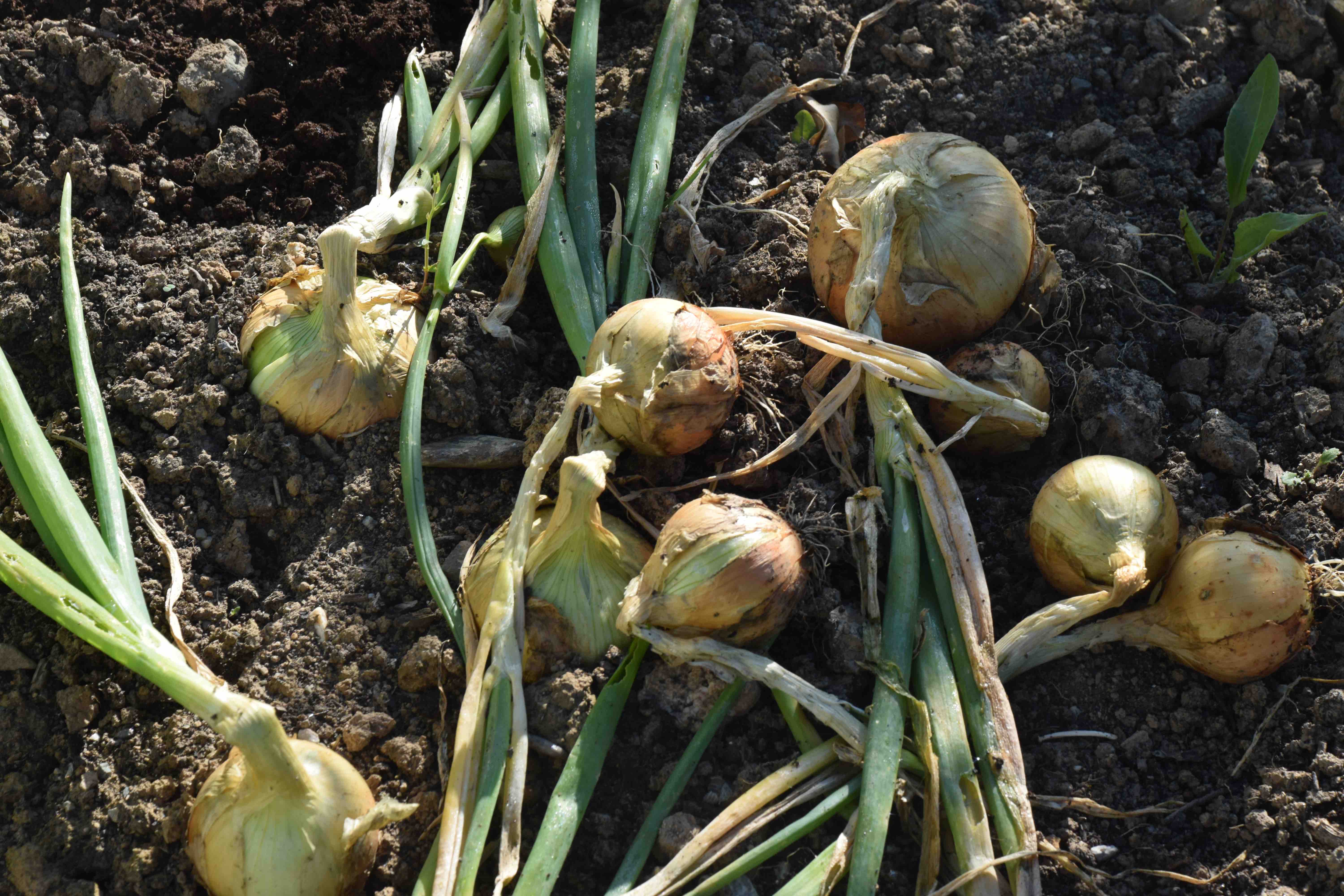
It might not be the busiest time in the garden but there is a lot going on. There is fruit to pick, weeds to pull, plants to water, pests to control and crops to harvest. The heat of the last week has been a challenge for us all. I am sure you have been running around with cans, just like me. But it is a bit cooler now and hopefully we can get back to normal.
At this time of year onions will be ready to ripen. As soon as a few leaves start to go yellow and the foliage falls over, you can promote ripening by pushing a fork under the plants and severing the roots. You can leave them on the soil surface for a few days if the weather is dry but otherwise put them somewhere dry and airy to dry. A poly tunnel is perfect or a shelf in the greenhouse. Make sure they are laid with enough air around them and do not stack them in piles or they can rot. Onions with narrow ‘necks’ are the ones to keep for storage and those with thick ‘necks’ should be used first. I lifted my autumn-planted onions last week but the spring-sown onions will be ready in the next few weeks.
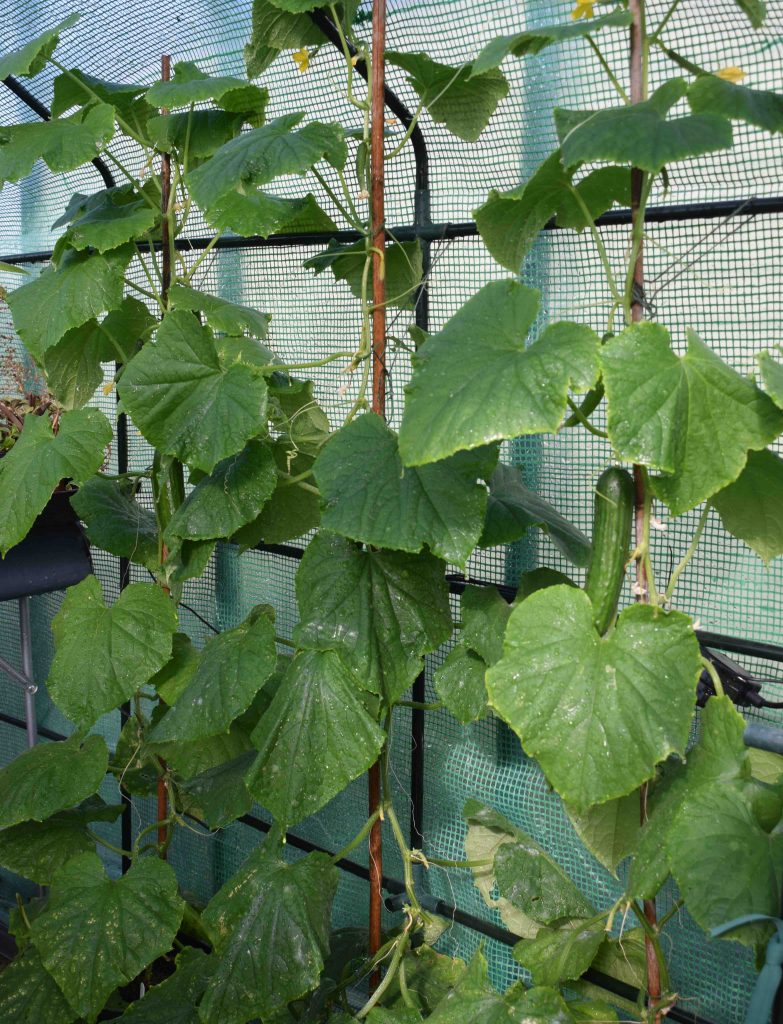
In the greenhouse the tomatoes are growing well. They need regular watering and the removal of sideshoots and tying to supports to keep them upright. It is best to keep cucumbers and tomatoes in separate greenhouses since cucumbers needs more shade and water. So mine are in pots in a mini-greenhouse within my greenhouse so I can keep them moist.. It is essential to pick the mature cucumbers as soon as they are ready so the plants are not put under strain and continue to make new fruits. My five plants have been so productive I had to find a use for excess fruit and made cucumber relish.
The plants must also never be allowed to dry out or they will get mildew – you can see spots of this fungus on the lower leaves above. Pick off affected leaves if they are badly spotted but do not remove too many leaves. Feed plants at least once a week to maintain growth.
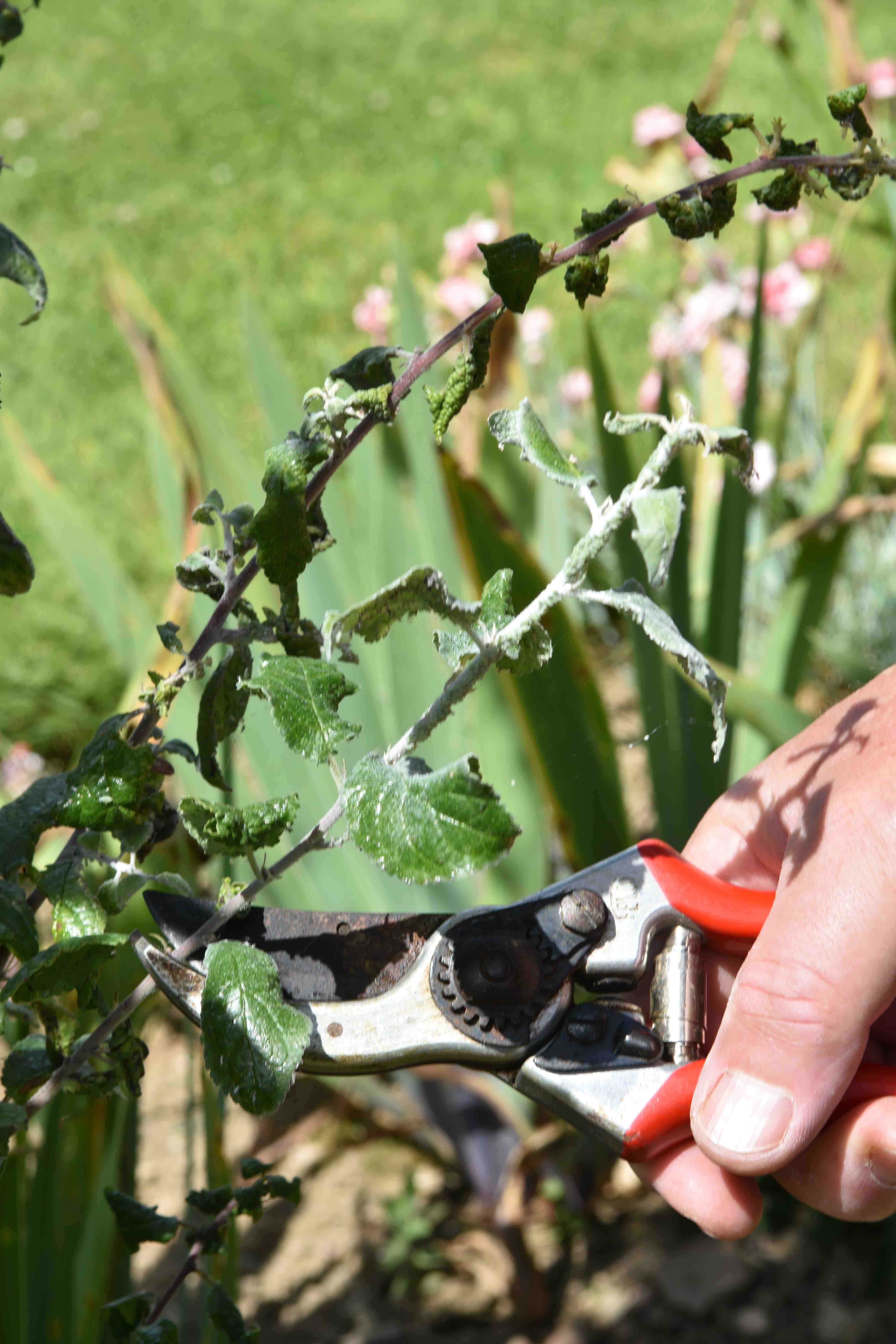
Outdoors, the plum trees have been attacked by aphids. The young shoots are covered in white aphids though black aphids are more common and cause similar twisting and distortion of the growth. This is the right time to prune plums and cherries so the best way to reduce the problem is to cut back the affected shoots. This will encourage branching and eventually better crops and a less straggly plant.
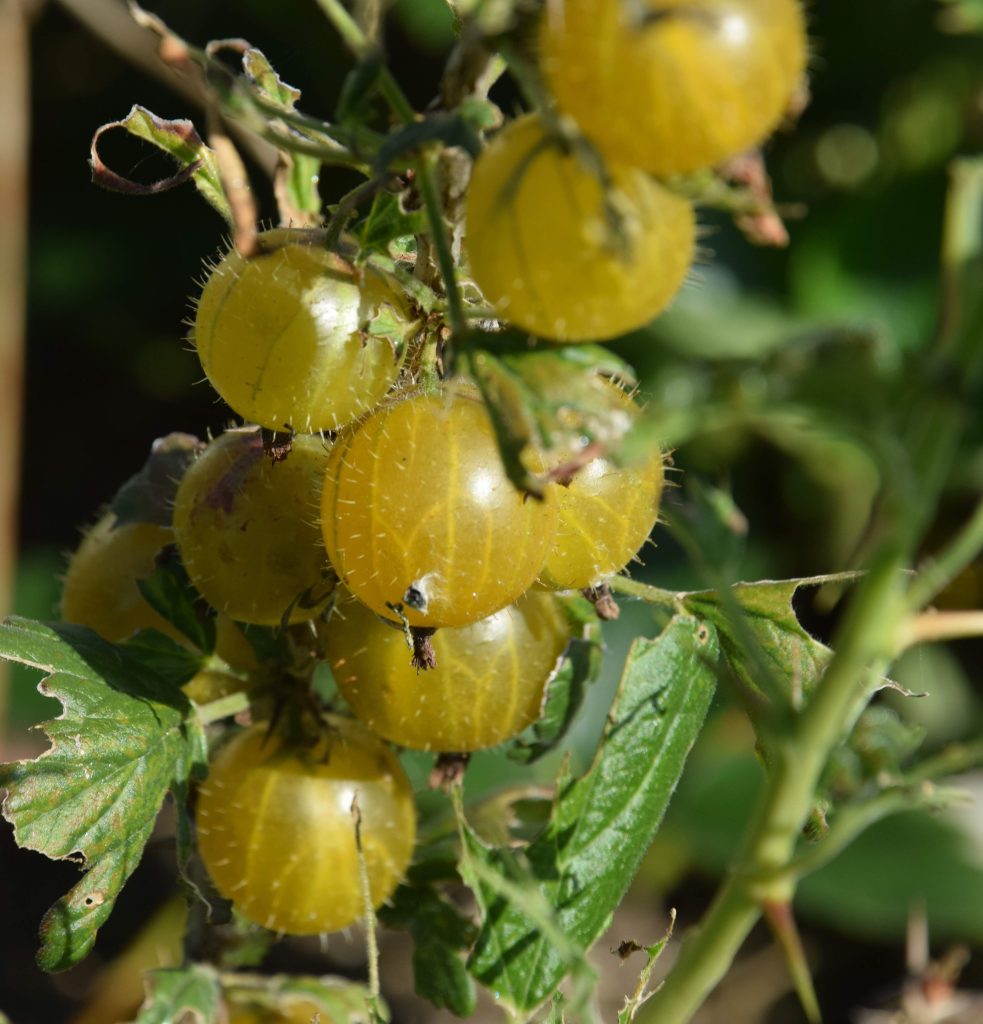
The gooseberries cropped well this year and ripened in the recent hot weather. It is always best to let them ripen fully when they are actually delicious and sweet unlike the viciously acidic gooseberries I remember from my childhood, only edible after being smothered in vast quantities of custard!
But watch out for sawfly, greyish ‘caterpillars’ that devour the foliage, leaving just stalks. There are usually two generations a season and although I thwarted the first brood I didn’t notice the second and they have stripped the plants. They will survive but if this happens too often the plants will be weakened. Pick off the grubs or, after picking the fruits, you can spray with an organic spray.
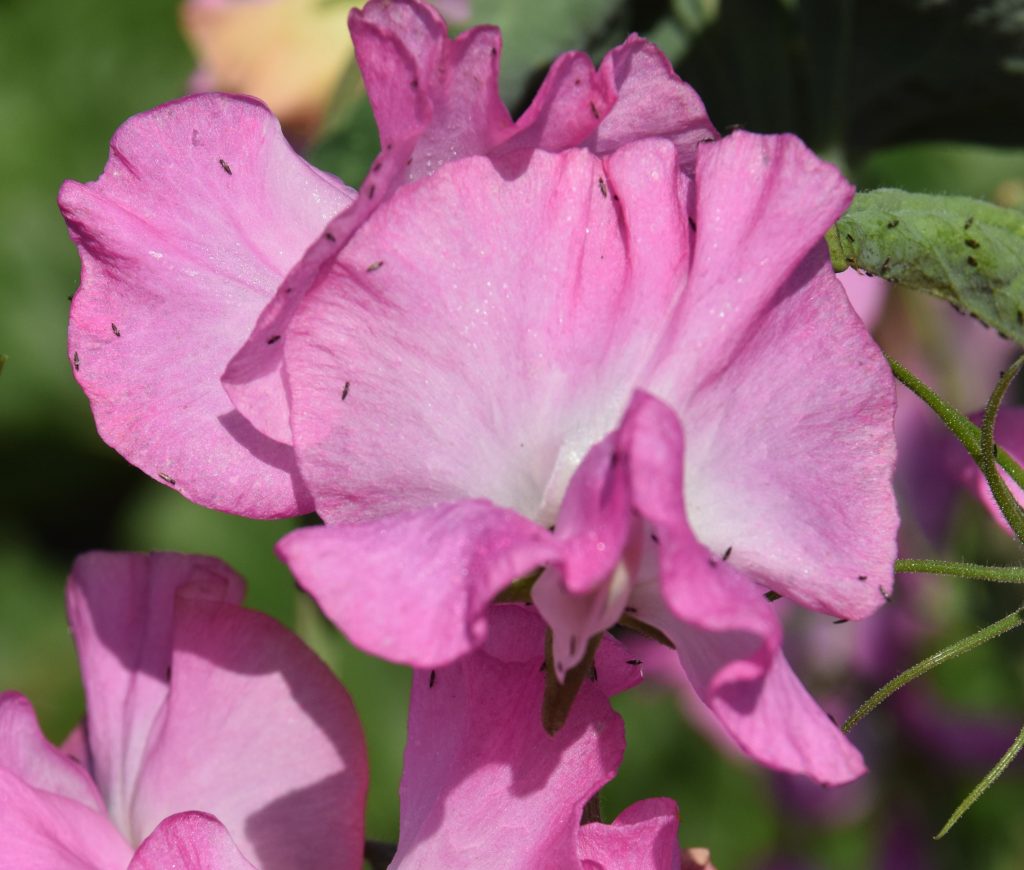
Another seasonal pest, which can seem more unsightly than serious, are thrips or thunder flies. These tiny insects suck the sap from leaves and flowers and are most common now because they often move from fields of wheat and other cereals as these go brown or are harvested.
Thrips are common little insects (most are about 2mm long and slim) and affect a wide range of plants. As they suck the plant cells dry these turn silvery or bronzed so affected leaves are speckled or discoloured. Some are native while others, such as the Western flower thrip from America (reaching the UK in 1986) are serious, introduced pests. They are also commonly called thunder flies because they are most obvious in hot weather and often fly in huge clouds in stormy weather – they may be affected by electrical charges during storms.
They tend to like pale flowers and I have had pale daylily flowers covered in them. In addition they like to crawl into crevices – apparently this is their way to avoid being killed by huge rain drops – and they get under your clothes and, in the house, can get into electrical equipment. I had a computer monitor ruined by one that looked like a comma on the screen – a notable premonition of the Jonathan Creek episode ‘The Seer of the Sands’ – and also in a camera viewfinder.
There is not much you can do about them and you must not spray open flowers because of the danger to pollinators.
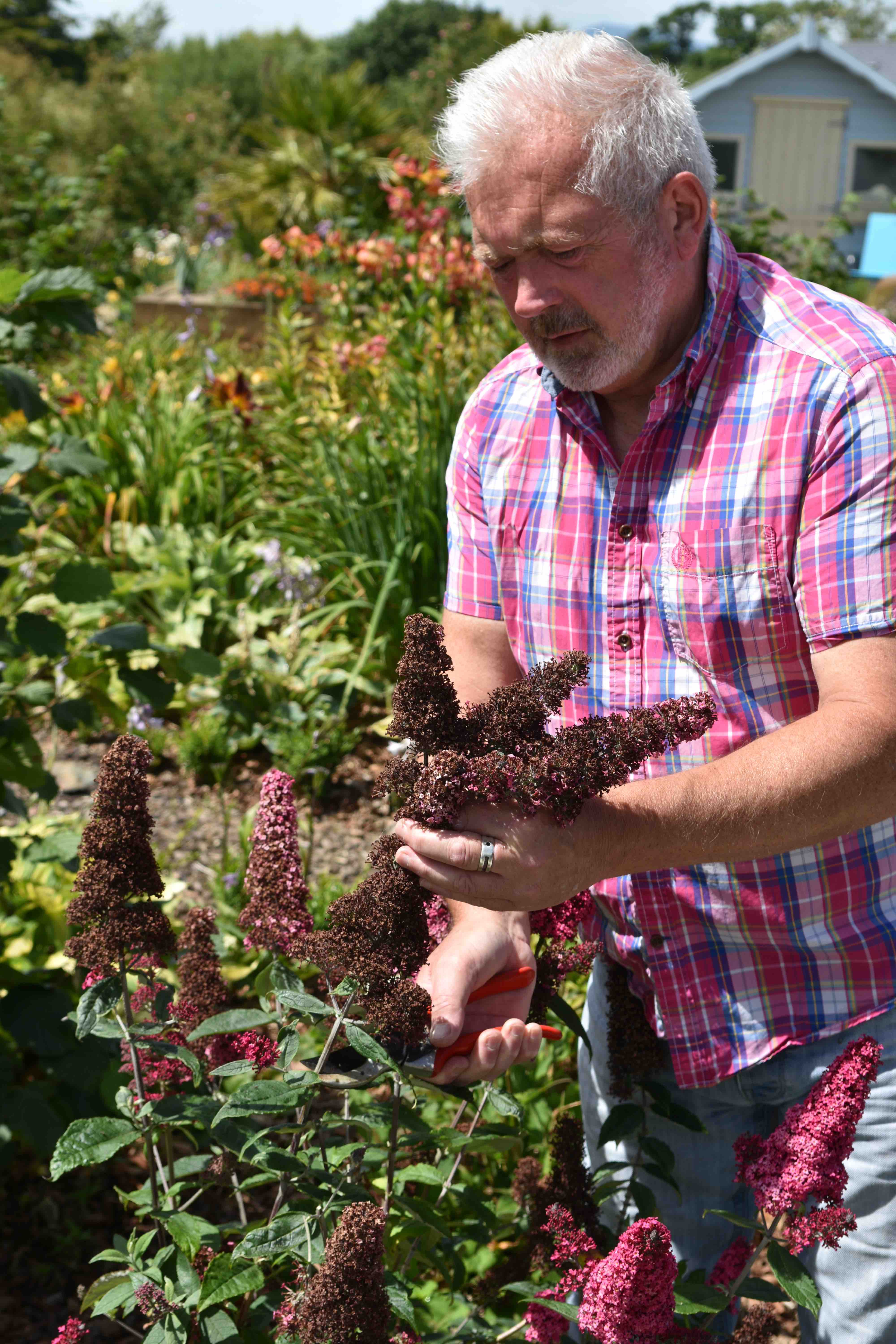
On a more positive note, it is worth deadheading buddleias as the flowers fade. It will prevent seed formation, keep the plants looking attractive and it will encourage more flowers to grow – though there is a limit to how long the plant will remain in bloom.